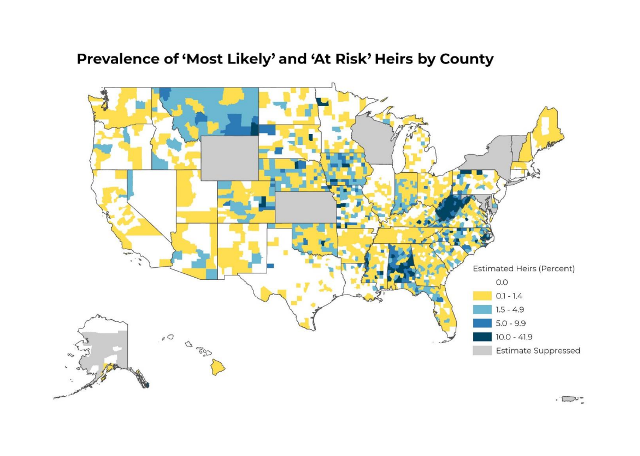Estimating the impacts of heirs’ property issues
When a property owner dies without a will or estate or when they leave the property to multiple heirs, it can create a number of financial barriers to inheritors receiving the full value of the property. In many cases, without a clear title, property owners are unable to access the equity in their home for maintenance purposes, sell the home at market rates, or obtain a mortgage, which can make them vulnerable to forced sales and property loss.
"A Methodological Approach to Estimate Residential Heirs’ Property in the United States," developed by the Housing Assistance Council in partnership with Fannie Mae, provides an estimate of the prevalence and impact of heirs’ title issues on a national scale.
Highlights
Billions of dollars in value
The total assessed value of properties impacted by heirship issues is conservatively estimated to be over $32B across 44 states and the District of Columbia.
Over 60% of heirs’ properties located in rural regions
While rural census tracts contain only about 30% of the country’s homes, they contain nearly two thirds (64.6%) of the country’s heirs’ properties.
Potential impacts on generational wealth
With homeownership among the primary means of wealth transfer in the U.S., heirship issues have the potential to expand the racial wealth gap.
Read the full report
Heirship issues impact the ability of thousands of homeowners to build wealth through their homes. Read “A Methodological Approach to Estimate Residential Heirs’ Property in the United States” for insights into this complicated issue and to understand the scale of the problem throughout the United States.

Proud to partner with HAC
Fannie Mae is pleased to have partnered with the Housing Assistance Council (HAC) to estimate the scope of heirship property issues in the United States. Working together, we hope to develop solutions that address such problems and ensure homeowners can access the equity and wealth in their homes.


